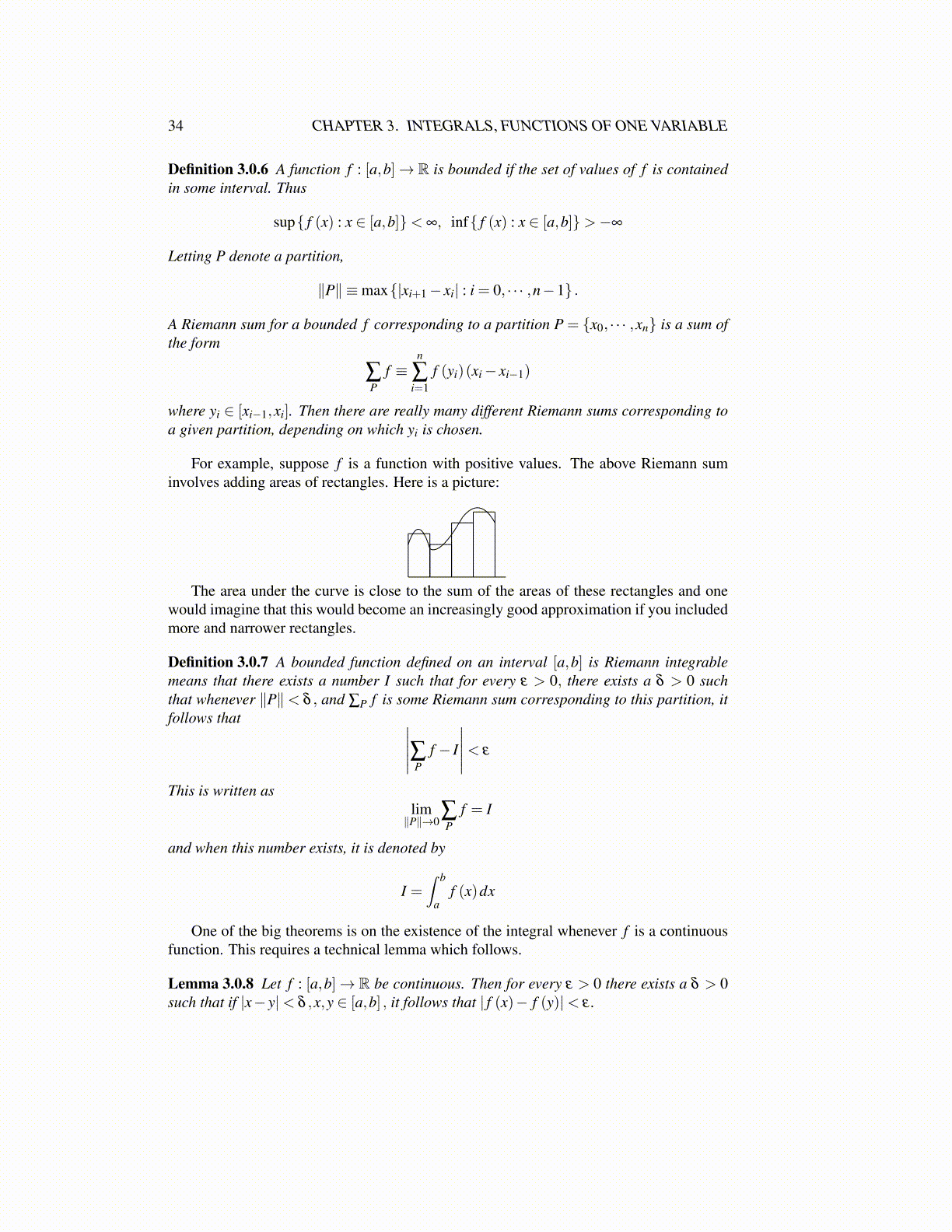
34 CHAPTER 3. INTEGRALS, FUNCTIONS OF ONE VARIABLE
Definition 3.0.6 A function f : [a,b]→ R is bounded if the set of values of f is containedin some interval. Thus
sup{ f (x) : x ∈ [a,b]}< ∞, inf{ f (x) : x ∈ [a,b]}>−∞
Letting P denote a partition,
∥P∥ ≡max{|xi+1− xi| : i = 0, · · · ,n−1} .
A Riemann sum for a bounded f corresponding to a partition P = {x0, · · · ,xn} is a sum ofthe form
∑P
f ≡n
∑i=1
f (yi)(xi− xi−1)
where yi ∈ [xi−1,xi]. Then there are really many different Riemann sums corresponding toa given partition, depending on which yi is chosen.
For example, suppose f is a function with positive values. The above Riemann suminvolves adding areas of rectangles. Here is a picture:
The area under the curve is close to the sum of the areas of these rectangles and onewould imagine that this would become an increasingly good approximation if you includedmore and narrower rectangles.
Definition 3.0.7 A bounded function defined on an interval [a,b] is Riemann integrablemeans that there exists a number I such that for every ε > 0, there exists a δ > 0 suchthat whenever ∥P∥< δ , and ∑P f is some Riemann sum corresponding to this partition, itfollows that ∣∣∣∣∣∑P f − I
∣∣∣∣∣< ε
This is written aslim∥P∥→0
∑P
f = I
and when this number exists, it is denoted by
I =∫ b
af (x)dx
One of the big theorems is on the existence of the integral whenever f is a continuousfunction. This requires a technical lemma which follows.
Lemma 3.0.8 Let f : [a,b]→ R be continuous. Then for every ε > 0 there exists a δ > 0such that if |x− y|< δ ,x,y ∈ [a,b] , it follows that | f (x)− f (y)|< ε .